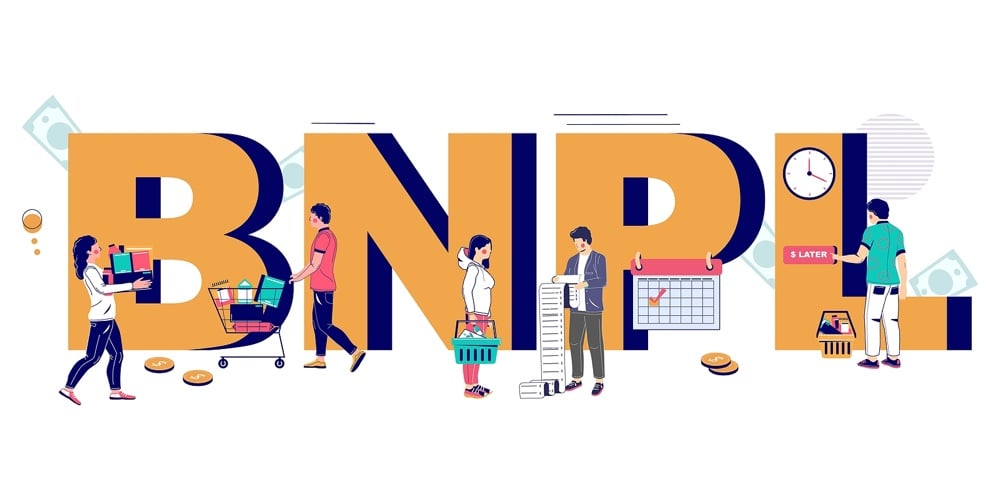What does BNPL’s popularity mean for credit unions?

The payments industry sees many trends come and go, but perhaps nothing has dominated the headlines like Buy Now, Pay Later (BNPL) has lately. Whether via fintech companies dedicated to short-term financing – like Klarna and Affirm, among others – to installment payments offerings from credit unions and other financial institutions, BNPL has secured its spot as a key player in the financial services ecosystem and is projected to continue as a mainstay for years to come. But what does that mean for credit unions and their members? And are the benefits worth the risks?
The state of BNPL
The BNPL market has skyrocketed in recent years. According to Adobe Analytics, consumers’ usage of BNPL hit an all-time high – contributing $16.6 billion in online spending, up 14% year over year – during the 2023 holiday shopping season (November and December). On Cyber Monday alone, consumers made $940 million in purchases using BNPL apps, an increase of 42.5% year over year. When looking back at 2023 as a whole, Adobe Analytics reported BNPL drove $75 billion in online spending, up 14.3% year over year, and $9.4 billion more than 2022.
Similar data was reported in the January edition of the PSCU Payments Index. Growth in BNPL payments for the top BNPL merchants increased 24% for the cumulative holiday season (October to December) compared to 2022. These BNPL transactions represented 3.6% of the overall debit transactions in the Goods sector for the three-month period. In addition, the largest year-over-year generational increase of users was with Gen Z consumers (ages 18-26), with an increase of 28% compared to the 2022 holiday season.
Consumers turn to BNPL for the flexibility it provides when deciding how and at what time to make purchases both big and small. The data indicates many of these consumers turned to BNPL to fund their holiday shopping this past year, further underscoring convenience and flexibility as factors driving BNPL to its current popularity.
The state of delinquencies
Fast forward to the post-holiday season, and some consumers are struggling to pay off the debts they racked up — a cycle that occurs almost every year after the holidays.
This year, credit card debt and delinquencies are higher than pre-pandemic levels, which may, in part, be attributed to the increasing popularity of BNPL programs. After bottoming out at 1.03% in May 2021, overall credit card delinquencies for January 2024 were 2.67%, per the February edition of the PSCU Payments Index. Findings also showed that delinquency rates decrease as age demographics increase. Year over year, there were notable increases for Older Millennials (ages 35-42), up 0.77 percentage points to 3.86% for January 2024, and Gen X (ages 43-58), up 0.63 percentage points to 2.55%. Baby Boomers (ages 59+) were only up 0.34 percentage points to 1.27%.
Although details of BNPL provider delinquencies are unknown, a 2023 study from the Consumer Financial Protection Bureau found consumers who use a BNPL offering are twice as likely to be delinquent on another credit product. Since multiple BNPL loans can be taken out at once, debt can add up quickly, and then borrowers can be hit simultaneously with interest or late fees for missed payments from multiple credit lines.
The limited data about BNPL purchases largely comes from BNPL programs that occur at the point of purchase. Card issuers offering post-purchase BNPL programs have greater flexibility based on cardholder history, existing credit lines and regular interactions. Offering post-purchase BNPL programs can help prevent consumers from overextending themselves, as well as protect the financial institution from delinquencies.
The takeaways
BNPL offers many benefits for credit union members when used responsibly. It is likely that your members are already using a BNPL offering, whether it is one offered through your credit union or another provider. This is especially true among younger generations: More than half of Gen Z (59%) respondents in PSCU’s 2023 Eye on Payments study reported using BNPL programs, and Younger Millennials show the greatest likelihood of using their financial institution’s BNPL program (61%), an increase of 74% from 2021 (35%).
Credit unions, backed by the “people helping people” philosophy, should continue taking the lead in providing educational resources about BNPL’s risks and benefits to help prevent members – whether old or young – from overextending themselves. Make it clear that BNPL should be used as a budgeting tool to provide greater flexibility and choice when it comes to payments, not as an opportunity to live beyond their means. For members who are in debt due to BNPL loans, consider offering financial counseling or credit card balance transfers to help members figure out how to best pay off their obligations.
BNPL is here to stay. Now is the time to make sure your members are armed with all available knowledge and support to ensure they utilize BNPL offerings responsibly and avoid delinquencies.

